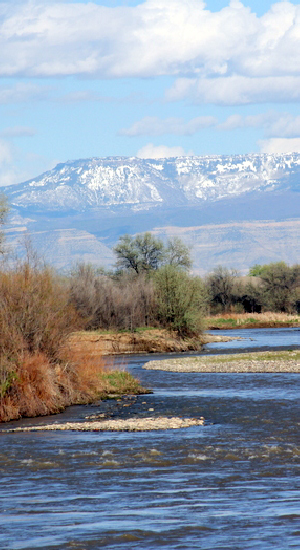
The Grand Mesa
The Grand Mesa is the largest mesa in the world with an area of about 500 square miles! It stretches for about 40 miles (65 km) east of Grand Junction between the Colorado River and the Gunnison River, its tributary to the south. The north side of the mesa is drained largely by Plateau Creek, a smaller tributary of the Colorado. It rises about 5,000 feet above the surrounding river valleys, including the Grand Valley to the west, reaching an elevation of about 10,000 feet (3,000 m), with a maximum elevation of about 11,327 feet (Crater Peak). Much of the mesa is within Grand Mesa National Forest. Over 300 lakes, including many reservoirs created and used for drinking and irrigation water, are scattered along the top of the formation. The Grand Mesa is flat in some areas, but quite rugged in others.
Geologically, the mesa is the result of a hard volcanic basalt layer on its top. This layer, formed approximately 10 million years ago by basalt flows, suppressed erosion compared to the surrounding sedimentary rock layers, which suffered rapid downcutting from the action of the Colorado and the Gunnison rivers.
The top layer rests on a thick sequence of Tertiary shale and sandstone known as the Green River and Wasatch Formations. These layers in turn rest on a Cretaceous layer known as the Mesaverde Group that forms a cliff about halfway up the side of the mesa. The lowest layers are yellow and gray Mancos Shale from the early Cretaceous age. The shale continues outward into the surrounding valleys in the vicinity of the mesa, providing a soil base that is fertile for various kinds of agriculture, especially in the Gunnison Valley to the south.
The mesa is traversed by State Highway 65 between the town of Mesa on the north and the town of Cedaredge on the south. The route over the mesa provides a dramatic contrast in landscape, climate and vegetation. On the north side, the road climbs the steep terrain near the Powderhorn Resort ski area. The forested top of the mesa remains snowbound much later in the spring than the surrounding valleys, and is a popular location for cross-country skiing and snowmobiling.
